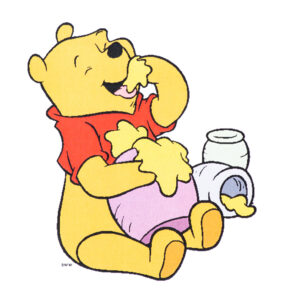All of us in recovery have a story. Our stories go back to before we began walking down the treacherous road of addiction. Many of us had, for the most part, decent childhoods. Growing up in houses full of love. Parents who bent over backwards to ensure we would be afforded every opportunity in life. After all, that is the role that parents are expected to take in a child’s life. Two people who teach you how to be a good person, to yourself and to others.
However, our guides in early life had no way of knowing that deep inside their children something was amiss. Rather than a philharmonic orchestra, a syncopated jazz ensemble was on stage. The music sounded great, but it was off-beat. While there is certainly beauty in organized chaos, left unchecked the lines of discord and harmony become blurred. Truly, the number of variables that lead one toward the grips of addiction are numerous. Each individual case with unique roots, but the trees that would grow up were similar in appearance. Everyone recovering from addiction has unique experiences, but what brought us to surrender looked the same.
The signs may not have been picked up on early on. But, it can’t be denied that a significant number of people living with addiction met the criteria for mental illness. In one form or another, early on. Such conditions, and a lack of treatment, likely played a part in many people’s path to drugs and alcohol. Verily, those touched by mental illness, but don’t have tools to cope or even talk about it, turn to self-medication. It doesn’t have to be in the form of substances, it can be behaviors as well. Patterns of risk-taking behaviors, specifically, resulting in co-occurring disorders.
What Does Winnie the Pooh Have to Do With People In Recovery?
When you were a kid, your parents likely read you children stories. Regardless of which decade you spent your childhood, A.A. Milne’s stories were probably read to you. Winnie the Pooh and his pals of the Hundred Acre Forest danced through your mind before falling asleep. We couldn’t see it then, but Milne was trying to reach us—even if it was inadvertently. You see, Milne fought in both world wars, which scared him. At the time “experts” would have called it bullet wind, soldier’s heart, battle fatigue, or operational exhaustion. But, most people called it “shell shock;” what we would call post-traumatic stress disorder.
A new biopic ‘Goodbye Christopher Robin,’ explores A. A. Milne’s battle with post-traumatic stress disorder (PTSD) and the creation of Pooh. Milne’s inspiration being his son and his toys, TIME reports. The Winnie the Pooh series has been dissected and has even been applied to schools of philosophy (i.e.The Tao of Pooh and The Te of Piglet) over the years. Helpful for those in recovery, to be sure. Perhaps even more relevant to the field of addiction is a study from 2000, published in The Canadian Medical Association Journal (CMAJ). Pathology in the Hundred Acre Wood: a neurodevelopmental perspective on A.A. Milne.
In the study, Dr. Sarah Shea Read and colleagues started out with the intention of having a bit of fun. They assigned a mental illness to each character, using criteria from the DSM, according to iNews. Dr Shea claims that she hadn’t any knowledge Milne’s struggle with PTSD, at the time of the research. Milne’s characters were likely the author’s way of processing his own struggle with mental illness. Untreated mental illness, that is.
Concept of Comorbidity (Co-Occurring Disorders)
For some of you, decades may have passed since you read or watched something with Winnie the Pooh. Still, there is good chance you remember the attributes of the characters. iNews compiled some of the researchers’ insights on the characters:
Winnie the Pooh: Attention Deficit Hyperactivity Disorder
This unfortunate bear embodies the concept of comorbidity [the presence of more than one disorder].
Most striking is his Attention Deficit Hyperactivity Disorder (ADHD). As clinicians, we had some debate about whether Pooh might also demonstrate significant impulsivity, as witnessed, for example, by his poorly thought out attempt to get honey by disguising himself as a rain cloud.”
Piglet: Generalized Anxiety Disorder
Had he been appropriately assessed and his condition diagnosed when he was young, he might have been placed on an anti-panic agent… and been saved from the emotional trauma he experienced while attempting to trap heffalumps.”
Eeyore: Dysthymia – or ‘Persistent Depressive Disorder’
We do not have sufficient history to diagnose this as an inherited, endogenous depression, or to know whether some early trauma contributed to his chronic negativism.”
Tigger: Recurring Pattern of Risk-Taking Behaviours
We acknowledge that Tigger is gregarious and affectionate, but he has a recurrent pattern of risk-taking behaviours. Look, for example, at his impulsive sampling of unknown substances when he first comes to the Hundred Acre Wood. With the mildest of provocation he tries honey, haycorns and even thistles. Tigger has no knowledge of the potential outcome of his experimentation.”
Rabbit: Possible Narcissism
We note his tendency to be extraordinarily self-important and his odd belief system that he has a great many relations and friends. He seems to have an overriding need to organize others, often against their will, into new groupings, with himself always at the top of the reporting structure.”
Do Unto Others… The Stigma of Mental Illness
People living with untreated mental illness are often treated poorly by society. What people can’t understand, often frightens them. Impelling them to treat people in ways that they would never wish to be treated. Perhaps all of us missed the most important aspect of Milne’s stories. That it is O.K. to be different. That things happen in life that are beyond any one person’s control. And rather than ostracize and exile others, compassion and love can be what helps them heal.
Humans have a long history of treating those with mental illness as broken. Moral weakness, and a lack of constitution, drove them to insanity and vice. That has never been the reality, but if people are treated that way they will never find the courage to recover. Recovery is possible, so long is people are given the opportunity to do so—without fear of repercussion.
More than anything, the key to the books are their tone of love and acceptance and unspoken forgiveness in the Hundred Acre Wood,” said Dr. Read. “The stories provide lovely examples of how humans should behave.”
Many of us, upon finding recovery, were unaware that our addiction was inextricably linked to a co-occurring mental health disorder. We found that when our depression or anxiety was treated, achieving lasting addiction recovery was exponentially more likely to come to fruition. If you are a young male battling addiction, please contact PACE Recovery Center. We can help.
You can watch the ‘Goodbye Christopher Robin’ trailer below:
If you are having trouble watching, please click here.



